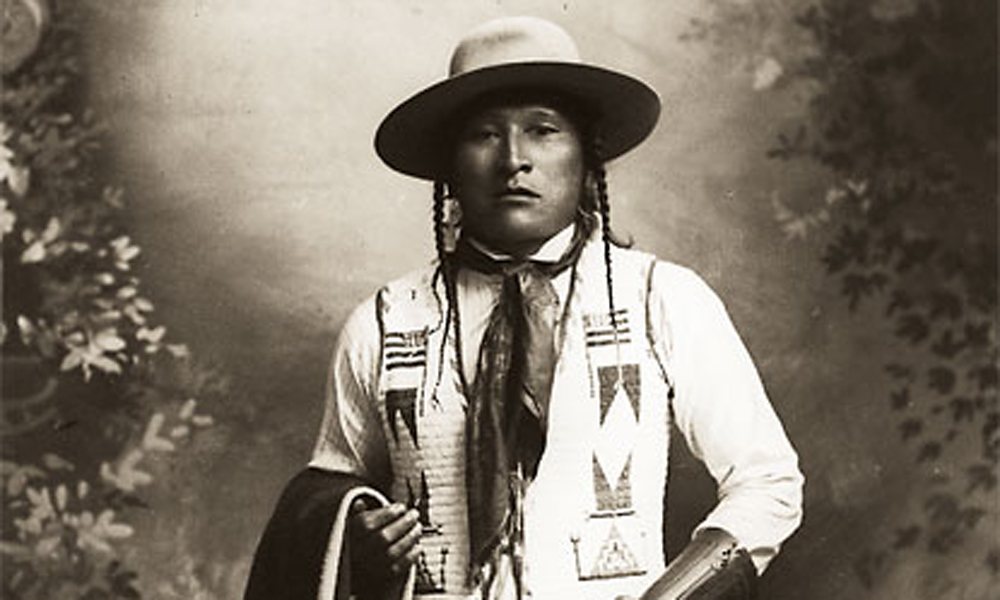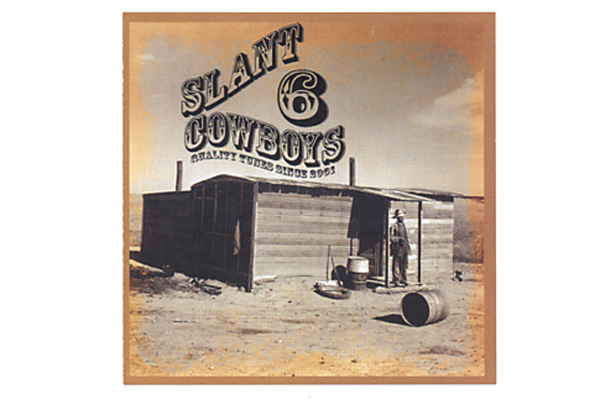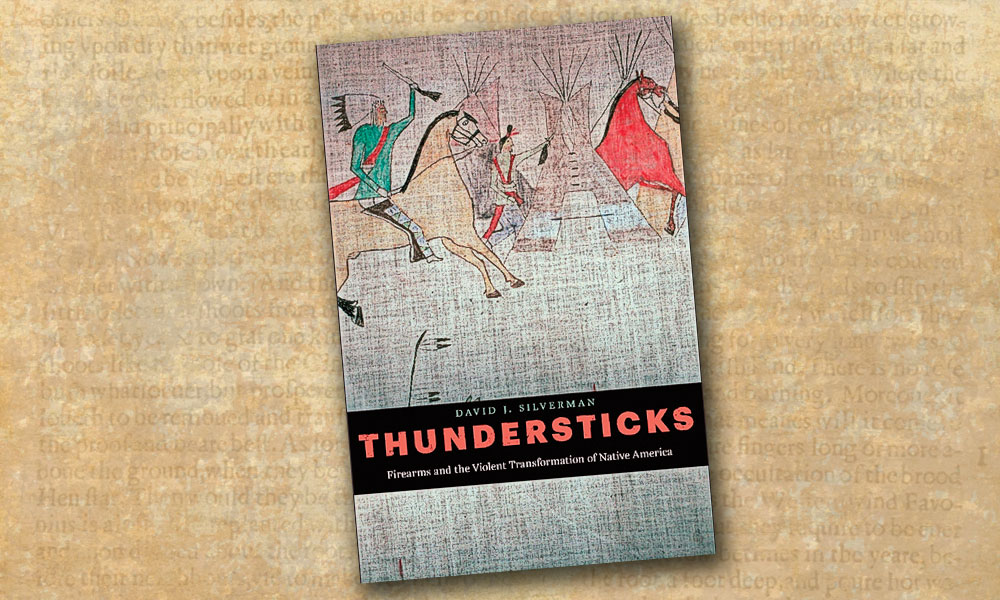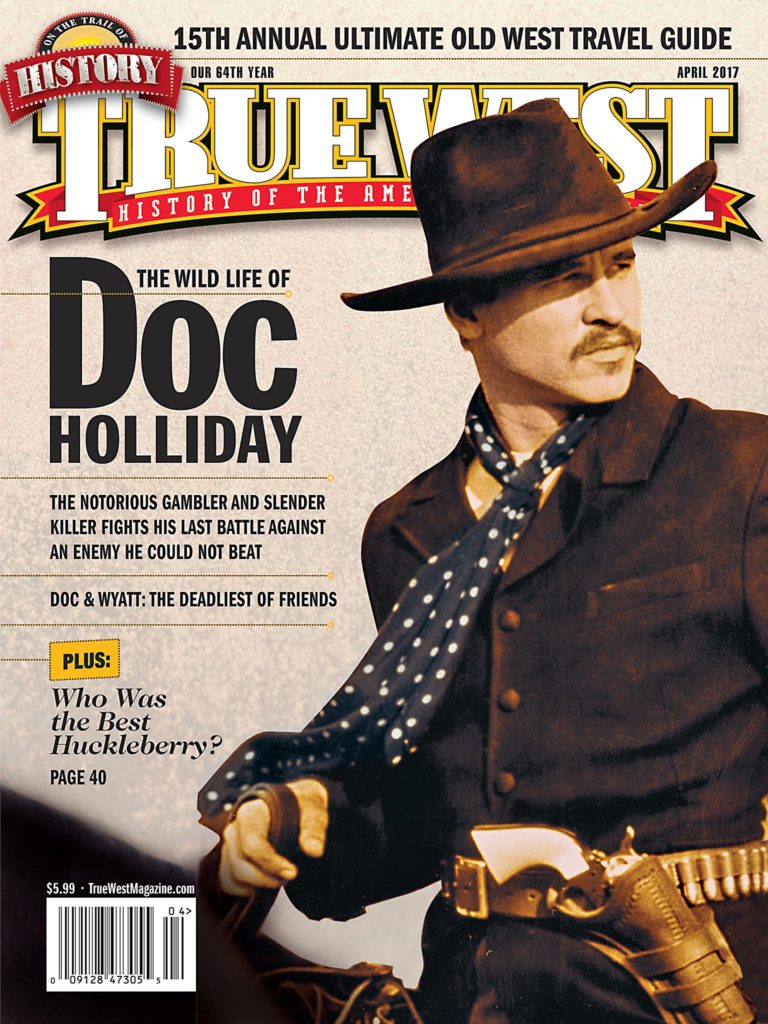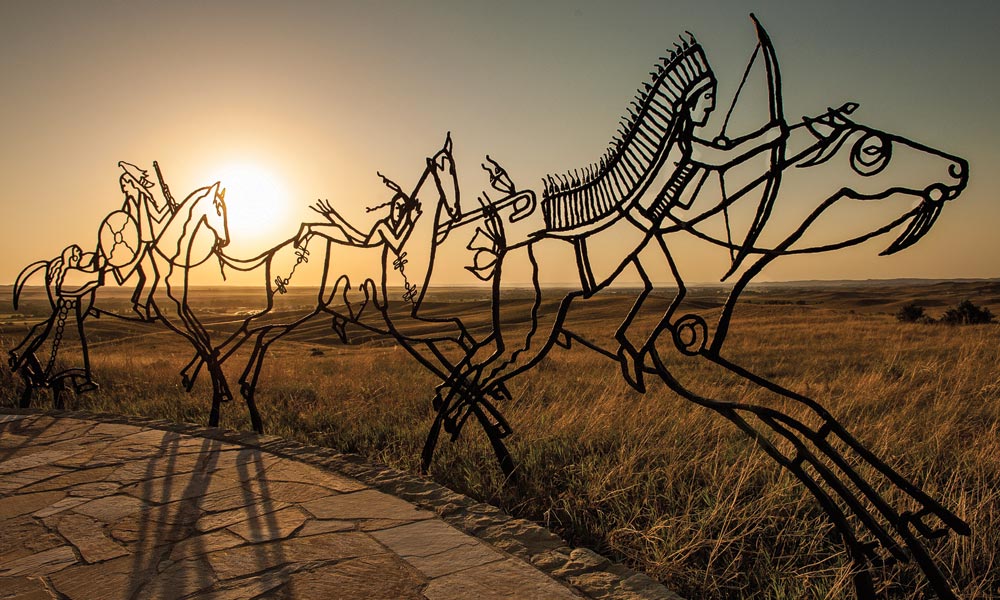
– Courtesy Montana Office of Tourism and Business Development –
An aging stone monument stands on a lonely, windswept hilltop in Wyoming. The century-old war memorial is seemingly forgotten by the busy travelers rushing down Interstate 90, about a mile away. As I stand at the base of the obelisk, gazing out at the wide open surrounding prairie, all is quiet and peaceful on this blustery fall day. But 150 years ago, this was the scene of the horrific battle known as the Fetterman Massacre—81 cavalry troopers lured into an ambush and wiped out by Sioux and Cheyenne warriors, themselves horse soldiers fighting for their land, their way of life and their very existence.
The Fetterman site lies in a unique and largely unspoiled region of the American West that is a treasure trove of Western history. This 200-mile stretch, running from Kaycee in north central Wyoming, north along the eastern slope of the Bighorn Mountains, and up to Billings, Montana, saw some epic events of the Old West. Custer’s Last Stand, The Battle of the Rosebud, the Lewis and Clark Expedition, the Wagon Box Fight and the last stand of the Cheyenne Indians all took place here. It’s also the former home to the Hole In The Wall Gang of Butch Cassidy and the Sundance Kid, and the ancient and mysterious Medicine Wheel of the Native Americans. Best of all, there are myriad opportunities to experience this country the way the legends who roamed here once did—on the back of horse, and none quite like U.S. Cavalry School, on the Custer Battlefield, in the heart of the Crow Indian Reservation.
Imagine trotting horseback down Medicine Tail Coulee, following the exact trail Custer rode on that fateful day in June of 1876. You’re sitting in the same McClellan saddle used by the troopers of the 7th Cavalry, dressed in the same uniform they wore, with the same single-action Colt in a holster on your hip. Here, in a deep ravine in the country the Indians called the Greasy Grass near the Little Bighorn River, you can see why Custer had no idea what was on the other side of these towering hills. “You cannot understand this battlefield, unless you do on it horseback,” says our expert guide, Lt. Col. (Ret.) Bobby Jolley. “The tyranny of the terrain ultimately determined the outcome of the battle.”
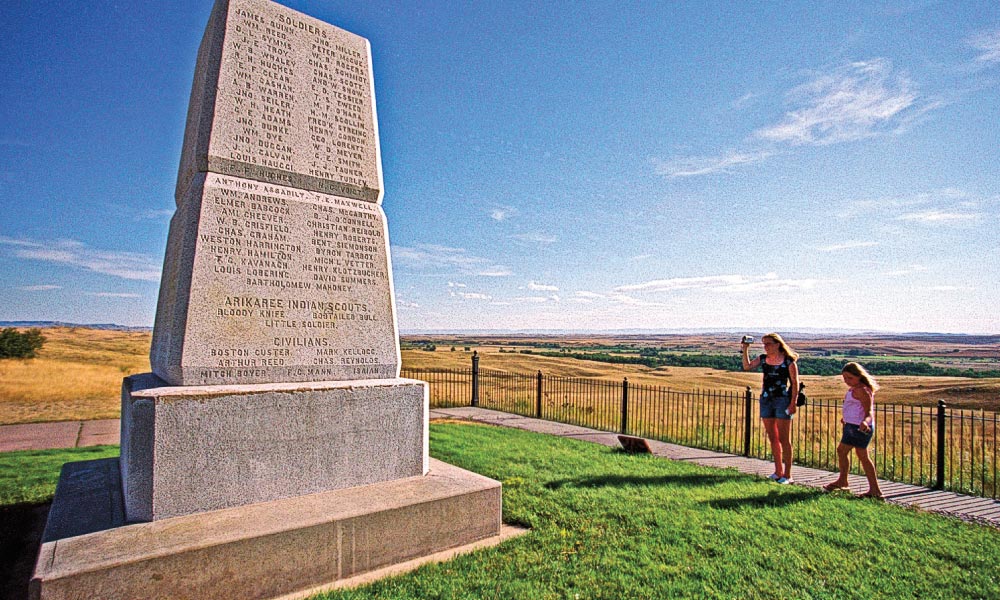
– Photo of Custer Monument by Mark Bedor –
Riding the battlefield is a daily highlight of U.S. Cavalry School, a week-long immersion into the life of an 1870s cavalry trooper. You’ll learn how the cavalry and its equipment evolved; drill with a sabre; ride in formation; and even go target-shooting with the same 1873 Springfield carbines the troopers carried. Then it all culminates with the annual re-enactment of the Battle of the Little Big Horn, on the battlefield where that legendary fight actually happened.
I was all ears listening to Col. Jolley, as we called him. The retired and decorated career officer is known as a top expert in the history of both the U.S. Cavalry and the Custer Battle. Pausing on our ride through the coulee, Jolley tells us it was here that Custer’s scouts rode up to rejoin him, arriving with bad news. The Sioux are annihilating Marcus Reno’s command, after his disastrous attack on the south end of Sitting Bull’s vast village, along the nearby Little Bighorn River. “So what the hell is Custer gonna do?” Jolley asks rhetorically. “He’s gonna move down this draw, and he’s gonna make a decision.…So let’s ride down to the mouth of the draw.”
Jolley—and history—tell us Custer feared the Indians would scatter when they saw the cavalry coming. But what Custer apparently failed to realize is the Sioux, Cheyenne and their Arapaho allies had nowhere else to run. This land, in what is now southeastern Montana, was part of the very last place where the Plains Indian could roam free. What’s especially great is it looks much the same as it did that dramatic June day in 1876.
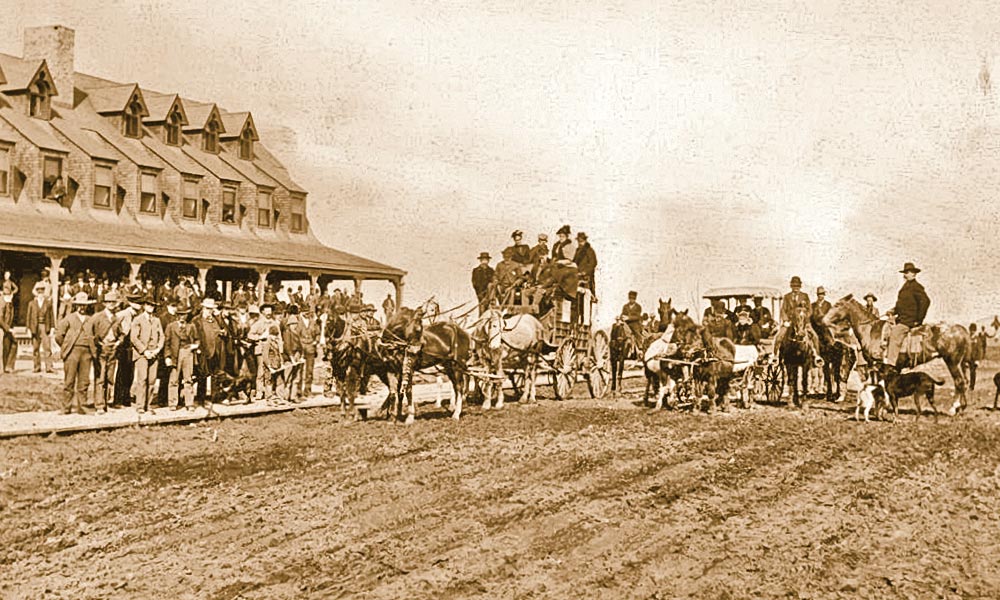
– Photos Courtesy Sheridan CVB –
That’s just a taste of all there is to see and do in this special part of the West. While we’ve all heard of the Little Bighorn Battlefield, you might not be so familiar with tiny Kaycee, Wyoming. This was Butch Cassidy’s stomping grounds. Forty miles southwest of Kaycee lies the famous Hole in the Wall, the remote and defensible hideout where the outlaw and his gang could hold off the law and stash stolen cattle and horses. Today it’s on federal government land administered by the Bureau of Land Management (BLM). You’re welcome to visit, but it’s rugged country requiring cross-country hiking or horseback riding. There’s no services, so be prepared.
The free life of the Cheyenne Indians came to an end 25 miles west of Kaycee. Months after the Custer Battle, on the bitter cold morning of November 25, 1876, Indian scouts lead Col. Ranald S. Mackenzie and his men to the tribe’s sec-luded winter camp. The Cavalry attack devastated the Cheyennes. Mackenzie ordered their village and all their possessions burned. The surviving Indians fled into the brutal winter weather defenseless, hungry and literally freezing to death. The battle site is now private property and part of the Graves family’s Red Fork Ranch. Tours are available.
In more recent years, Kaycee gained fame as the hometown of the late, great Chris LeDoux. The onetime world bareback-riding champion and singer-songwriter was best known for his unique brand of rodeo rock ’n’ roll, selling millions of records. Today he’s forever memorialized on a bronze buckin’ bronc, in Kaycee’s Chris LeDoux Park.
You can spend the night 40 miles north in Buffalo, Wyoming, at the Occidental Hotel. The historic inn is where Butch and Sundance, Buffalo Bill, Annie Oakley and Calamity Jane slept, and where Owen Wister wrote at least part of his famous novel, The Virginian. Longtime owner Margaret Smith, who ran the Occidental for 56 years, hung on to all the old records, furnishings and antiques. And while the place did become so dilapidated it was nearly torn down, new owners came to the rescue in the 1990s. They not only saved the Occidental from the wrecking ball, but restored it to much of its former glory. Today it’s great fun to spend the night where legends did, or just take a tour.
Those old Wyoming cowboy towns are great fun too. And it doesn’t get any more cowboy than Sheridan. Twenty miles north of Buffalo, this was once home base to Buffalo Bill’s Wild West show. Don’t miss Don King Saddle Shop, and the King family’s very impressive private museum, featuring authentic Native American artifacts from the 1800s. And you have to take a look inside downtown Sheridan’s famous Mint Bar. Outside town, riders will want to check out Eaton’s Ranch, a historic Wyoming dude ranch the Eatons have opened to guests for five generations.
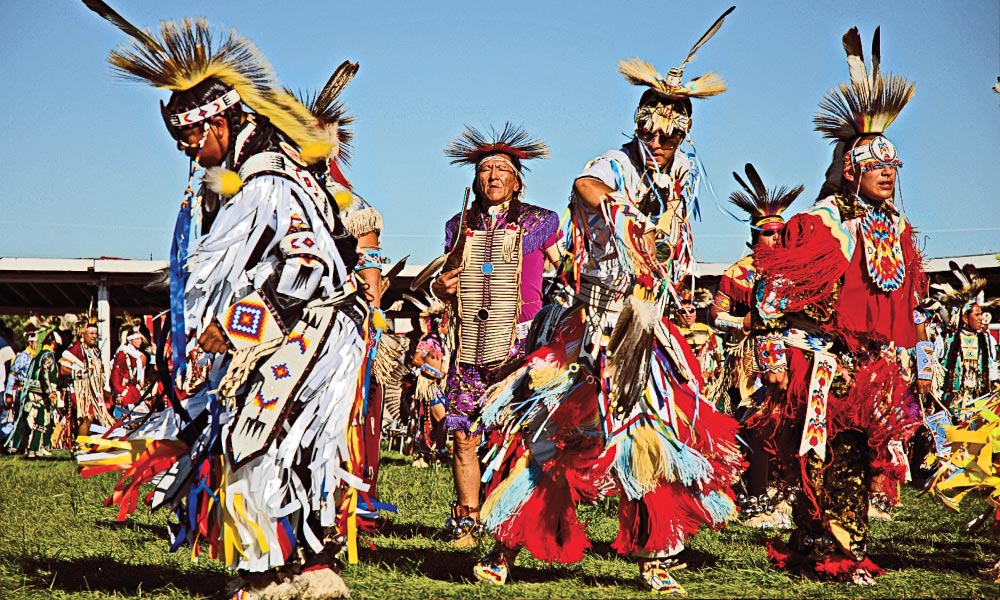
– Mark Bedor –
West of Sheridan on the Big Horn Mountains’ Scenic Byway is a historic site high in the Bighorns that the Indians were using long before Columbus set sail. The mystical Medicine Wheel looks like a wagon wheel of stone laid out on the ground, stretching 75 feet across, at an elevation of nearly 10,000 feet. Sacred to American Indians, the Medicine Wheel is also a national historic landmark.
The best opportunity to experience American Indian culture today is Crow Fair, known as the biggest Indian pow-wow in the country. The annual August gathering on the Crow Indian Reservation welcomes members of all tribes. With some 1,500 teepees set up for the event, Crow Fair easily earns its distinction as the teepee capital of the world.
The Crow Reservation is also home to the Little Bighorn National Monument. But much of the sprawling battlefield, which stretches more than a mile, actually lies on Crow land. For example, the land along the banks of the Little Bighorn River, where Sitting Bull and thousands of other Indians were camped the day of the battle, now belongs to a Crow family known as the Real Birds. And the Real Bird property, complete with grandstand, also hosts the re-enactment that takes place the final weekend of U.S. Cavalry School. “My Great-grandfather Medicine Tail, he owned this land here,” explains our genial host Richard Real Bird. “And they say he welcomed everybody here…everybody that wanted to come here and have a sweat lodge or swim in the river. And we continue that. It’s a family tradition.”
And so Cavalry School wall tents are set up where Sitting Bull’s teepee village once stood, just steps away from the Little Bighorn River. “Isn’t there something mystic about this?” mused Cavalry School horse-outfitter John Doran one evening. “…When everything’s quiet…and the stars are coming out? This is not a park. This is the Little Bighorn River. How many people can say they’ve ridden across the Little Bighorn on a cavalry horse in a cavalry uniform in a McClellan saddle?”
But that’s what we did every day that week. The Little Bighorn is no little creek—it’s a river. Expert instruction in how to safely ford the river on horseback was our first lesson. By week’s end, we were dashing across the water like old pros.
There was a side trip to the site of the Battle of the Rosebud, where eight days before the Custer Fight, Crazy Horse had led an attack on U.S. soldiers advancing from the south under Gen. George Crook. If not for the ferocious fighting of the army’s Shoshone and Crow allies, Rosebud might have been Crook’s Little Big Horn.
Today the Rosebud Battlefield is a Montana state park. A simple marker tells of the momentous history that happened here 140 years ago. Looking at the hills, you can imagine the desperation where brave men fought and died. Women, too. The Cheyenne people call this battle, “Where the Girl Saved Her Brother,” in honor of the courageous Buffalo Calf Road woman who rode to the rescue of her wounded warrior brother. Also known as Brave Woman, legend says she fought in the Battle of the Little Big Horn, and was the one who struck the blow that knocked Custer from his horse.
Like much of this historic area, Rosebud is happily undeveloped, relatively remote and obscure. Quiet, peaceful and beautiful. But you can sense its history. Imagine that drama. Walk where legends did.
Ride their trails. The West is still here. All that’s missing is you.
Mark Bedor has had been writing about and photographing the American West for nearly 20 years. The author of two Western photography books now hosts the new PBS documentary show Today’s Wild West, streaming free online at TodaysWildWest.co


